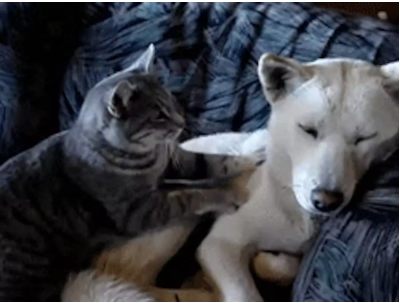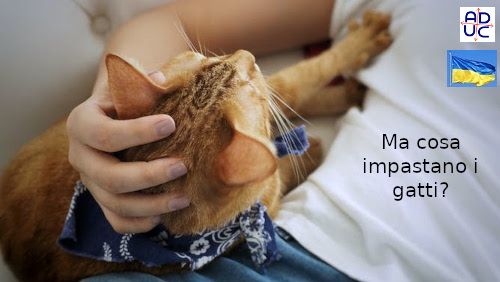This movement, which owes its name to the similarity to the action of kneading, repeats itself rhythmically. You may have seen your feline do this before and wondered where this behavior could be coming from.
So why do cats knead? Can this action teach us anything about how they feel and what to do when they “bake bread” on us?
The evolutionary origins of dough
Cats start doing this gesture when they are little kittens drinking their mother’s milk. Kneading is associated with nursing and helps stimulate the production of milk maternal through the release of oxytocinand probably evolved for this reason.
Kneading has another evolutionary advantage as well. It can be used as a form of tactile and pheromonal communication between kitten and mother.
Cats have scent glands in their paw pads and when they knead, these glands release pheromones (chemical messages that are used to communicate).
Kneading the mother, they release pheromones associated with attachment, identification, health status or many other information.
One of these, called the “cat calming pheromone,” is released from the sebaceous glands located around the mammary glands.
In addition to being important for the mother’s bond with her young, the cat’s calming pheromone also has the power to treat the aggression in adult cats.
If kneading is kitten behavior, why is my adult cat still doing it?
While kneading has evolved to stimulate milk production and to transmit tactile and chemical messages between kitten and mother, it is also a common behavior of adult cats, due to a phenomenon called neoteny.
We speak of neoteny when an animal retains its juvenile physical or behavioral traits into adulthood. It is likely that these characteristics allow cats to socialize with humans and other felines or pets.
Dough, in particular, can continue into adulthood because it can be used to communicate messages.
When your cat is on your lap making bread, it’s a way of saying “let’s bond” or “you’re part of my social group.” Or, for a more human view, “you are my friend”.
If you reward your pet with attention when kneading, you reinforce his behavior.
Some cats like to knead on soft or wool blankets while sucking on them, as if it were a pacifier. It can be relaxing or calming for the cat due to this association.
What does the dough tell us about our cat’s feelings?
In most cases, kneading means a cat is feeling good.
However, if he kneads (especially while nursing) very often, for a long time, compulsively, or if his pads, paws or mouth start to hurt, it could be a sign that the animal is stressed or in pain. , and it is best to consult a veterinarian.
Compulsive kneading and nursing is a common problem seen in cats Siamese and Burmese.
Not all cats like to bake bread. Just like people, cats are individuals and each one shows in his own way that he is good or that you are one of them.
Help! My cat hurts me!
Kneading is a normal behavior that can help your cat feel connected to you. If his claws are a little too much for your taste, spread a thick blanket over your legs. Avoid scolding him or pushing him off your knees.
To encourage him when he kneads you with as few claws as possible, offer him more attention by petting him or giving him a treat.
You can even add a signal to request it to retract its claws. Something short like “claws!”. Match the word and a food reward to the desired behavior.
And if your heart is filled with love, it’s as perfect as a cat!
(Susan Hazel – Associate Professor, School of Animal and Veterinary Science, University of Adelaide -, Julia Henning – PhD Candidate, University of Adelaide -, su The Conversation del 03/02/2023)
the association does not receives and is against public funding (also 5 per thousand)
Its economic strength are inscriptions and contributions donated by those who deem it useful
DONATE NOW
